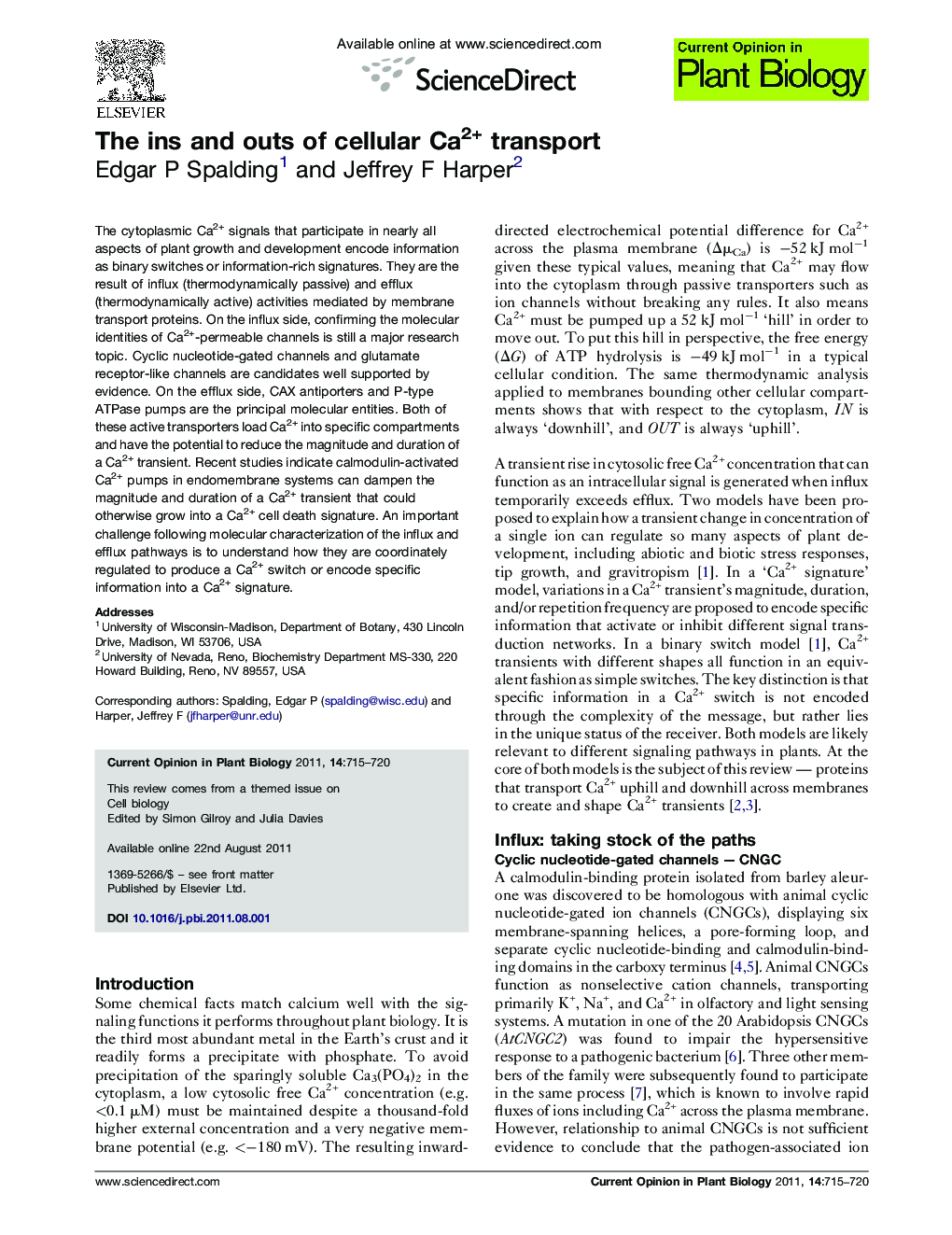| کد مقاله | کد نشریه | سال انتشار | مقاله انگلیسی | نسخه تمام متن |
|---|---|---|---|---|
| 2046209 | 1073763 | 2011 | 6 صفحه PDF | دانلود رایگان |

The cytoplasmic Ca2+ signals that participate in nearly all aspects of plant growth and development encode information as binary switches or information-rich signatures. They are the result of influx (thermodynamically passive) and efflux (thermodynamically active) activities mediated by membrane transport proteins. On the influx side, confirming the molecular identities of Ca2+-permeable channels is still a major research topic. Cyclic nucleotide-gated channels and glutamate receptor-like channels are candidates well supported by evidence. On the efflux side, CAX antiporters and P-type ATPase pumps are the principal molecular entities. Both of these active transporters load Ca2+ into specific compartments and have the potential to reduce the magnitude and duration of a Ca2+ transient. Recent studies indicate calmodulin-activated Ca2+ pumps in endomembrane systems can dampen the magnitude and duration of a Ca2+ transient that could otherwise grow into a Ca2+ cell death signature. An important challenge following molecular characterization of the influx and efflux pathways is to understand how they are coordinately regulated to produce a Ca2+ switch or encode specific information into a Ca2+ signature.
► Heterologous expression and in planta mutant data best define a transport function.
► Each Ca2+ influx candidate requires more experimental testing.
► Regulation of influx and efflux pathways control Ca2+ transients.
► Endomembrane Ca2+-pumps can function to suppress a Ca2+ cell death signature.
Journal: Current Opinion in Plant Biology - Volume 14, Issue 6, December 2011, Pages 715–720